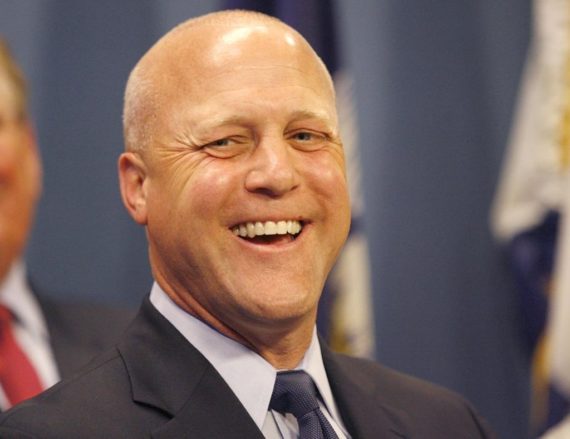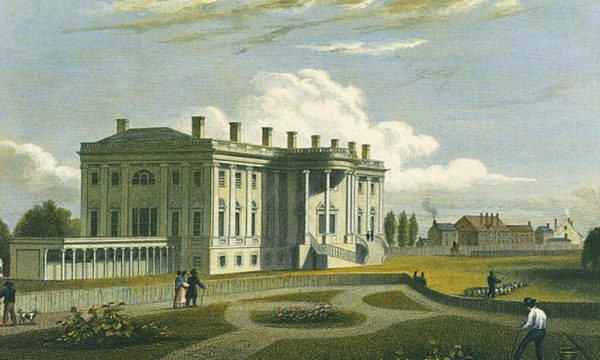Political correctness didn’t succeed as well as the Left had hoped it would because PC conflicts with the concept “two sides to every story.” National media only presents the side that bolsters its socio/poltical agenda, and it seems to think its opinions are widely accepted. But polls indicate that the public’s trust in media has sunk to one of its lowest levels. Alternative news sites are presenting the other side of the story and more people seek second opinions on news reports.
Currently, we are experiencing a serious “demographic, ideological, and cultural” divide in our nation. The Left thought the public had blithely accepted its “modernized”, one-sided revisionist history and so it didn’t expect the widespread opposition to the Confederate monument removals in New Orleans. The public apparently knows more about American history than the Left realizes.
This modernized, one-sided interpretation of history is illustrated in a recent speech that New Orleans Mayor Mitch Landrieu made in an attempt to justify historic monument removals. The New York Times was touched by the speech’s eloquence; CNN called it remarkable, and the Washington Post referred to it as poetic. I’ve read the speech a couple of times but I didn’t find anything remarkable, eloquent, or poetic. It was simply another of the cliché-ridden attacks on the Confederacy and the South that we’ve been inundated with for some time.
Early in the speech Landrieu quotes President George W. Bush: “A great nation does not hide its history. It faces its flaws and corrects them.” Not being a deep thinker, Mitch Landrieu interprets this phrase to mean eliminating reminders of the past but its real meaning is not that simple.
Some highlights from the Mayor’s speech: “These monuments purposefully celebrate a fictional, sanitized Confederacy; ignoring the death, ignoring the enslavement, and the terror that it actually stood for.” “The Civil War is over, and the Confederacy lost and we are better for it. Surely we are far enough removed from this dark time to acknowledge that the cause of the Confederacy was wrong.” “The Confederacy was on the wrong side of history and humanity. It sought to tear apart our nation and subjugate our fellow Americans to slavery.” Mitch Landrieu actually compares the monuments to “a burning cross on someone’s lawn.”
He mentions the “cult of the lost cause” at least four times and states: “This ‘cult’ had one goal — through monuments and through other means — to rewrite history to hide the truth, which is that the Confederacy was on the wrong side of humanity.”
The phrase “the wrong side of humanity” is mentioned a few times, and Landrieu also makes references to white supremacy, terrorism, lynchings, slave blocks, beatings, rapes, and tortures. As we might expect, the Mayor includes quotes from Barack Obama, Martin Luther King, Jr, Nelson Mandela, and Abraham Lincoln, whom he calls “our greatest president.”
Mitch Landrieu couldn’t resist a little melodrama, so he asks us to imagine how pained a young black girl must feel when she has to look at a statue of Robert E. Lee. He asks: “Can you look into that young girl’s eyes and convince her that Robert E. Lee is there to encourage her? Do these monuments help her see a future with limitless potential?”
Landrieu even states that the Confederate monuments are the reasons many New Orleanians are moving to other cities. But this conflicts with how social scientists have characterized the city’s population decline. And if demolishing the monuments is so beneficial and righteous, why does the donor funding this noble project insist that his identity be kept secret?
I lived in New Orleans for two decades: from the 1970s into the 1990s, and my family and I had frequent interactions with people of different races and various ages. During that entire time, I don’t recall a single complaint about these celebrated monuments. Lee Circle was a popular gathering spot where young children, black and white, could be found laughing and playing around the base of General Lee’s memorial.
Demands for monument eliminations are a present day issue, instigated by the local Black Lives Matter organization. But Black Lives Matter histrionics haven’t convinced all citizens. Many want to save the heritage monuments. The Monument Task Committee was created for that purpose and is engaged in efforts to have the monuments restored. Mitch Landrieu only got involved in the removal campaign to boost his lagging career, but his publicized justifications for his actions may be encouraging others to demand more eliminations.
So what will happen when the initial excitement over the removal of historic monuments fades? Will the locals who protested simply return to their lives and accept the fact the removals didn’t make them feel any better? Will they demand more removals and bicker with others about suitable replacements? What will the Mayor do next to conceal his failure to address this troubled city’s real problems?







